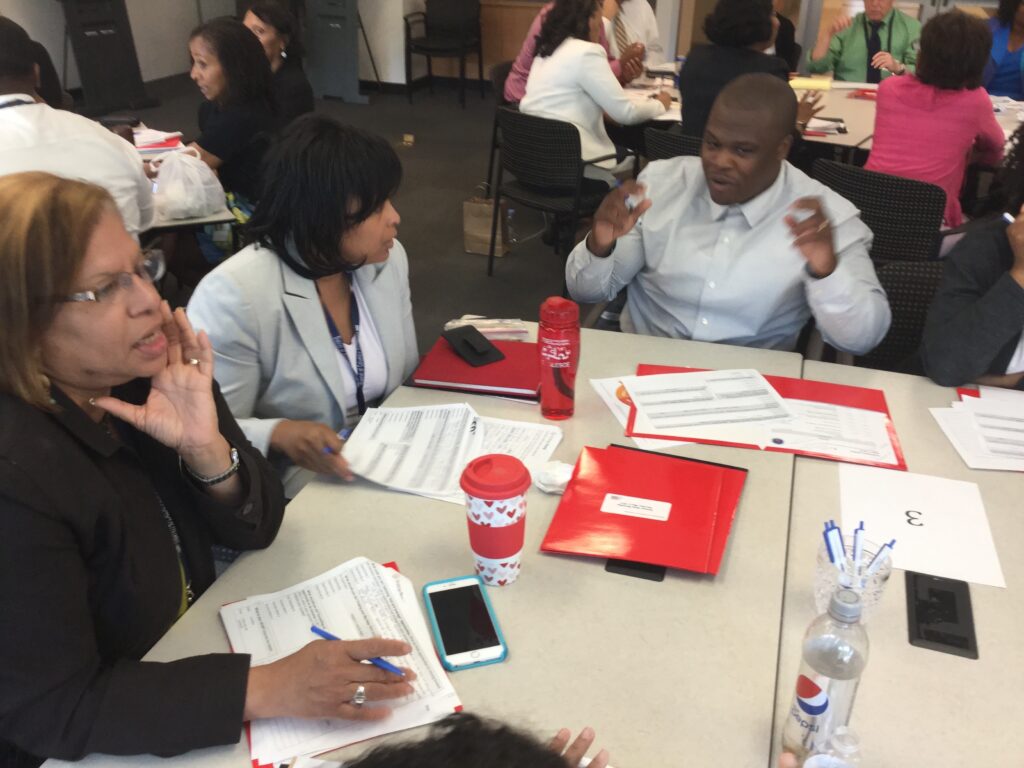A Brief Overview of Strategic Doing
Strategic Doing – a peer-reviewed, scientifically grounded practice — teaches the discipline of collaboration and strategy in open networks.
The practice works well to develop collaborations across siloed organizations, multi-disciplinary research teams taking on grand challenges, and ecosystems.
DEFINING COLLABORATION PRECISELY
Collaboration is a process of recombinant innovation among equal partners. Participants convene to create solutions to complex problems and new value through the assets already at hand.
COLLABORATIONS FOLLOW A CONVERSATIONAL STRUCTURE
The key insight of Strategic Doing is that these collaborations emerge from conversations with a predictable structure. As participants learn how to design and guide these conversations, the performance, volume, and velocity of their collaborations grow.
FOUR KEY QUESTIONS FORM THE FOUNDATION OF A COLLABORATION
There are four key questions to a strategic conversation based on Strategic Doing:
- What Could We Do? What are the opportunities before us – using only the assets we already have – might generate solutions to the complex challenge we face?
- What Should We Do? We can’t do everything; which, out of all the opportunities, should we pursue, and what would success look like?
- What Will We Do? Where will we start? What project should we launch? What commitments are we making to each other to begin that project?
- What’s Our 30/30? When will we get back together to share what we’ve done so that we can learn from our experience, adjust if we need to, and plot out our next set of commitments?
THE TEN SKILLS TO DESIGN AND GUIDE A COLLABORATION’S STRATEGIC CONVERSATION
Ten core skills (or ‘rules’) are used iteratively to drive toward success in building a new and effective purpose network.
Skills 1 and 2 help participants design productive, collaborative conversations. They ensure psychological safety and position a challenge as a question. This starting point encourages a spirit of inquiry, not advocacy.
Skills 3 and 4 are the components of “What Could We Do?” – identifying new opportunities that draw on the assets we already have.
Skills 5 and 6 comprise “What Should We Do?” – Participants choose an opportunity and define an outcome with measurable characteristics.
Skills 7 and 8 become “What Will We Do?” – Participants define a “pathfinder project” to begin the process of learning by doing. They make short-term commitments to build confidence and trust.
Skills 9 and 10 point participants to “What’s our 30/30?” – Participants commit to sharing what they are learning and making adjustments. In addition, they commit to practicing a new set of habits to strengthen and grow their network.
Strategic Doing is a shared practice that is simple but not easy—ten skills underly the four questions. Teams learn to practice these skills both individually and collectively. As they do, complex collaborations’ velocity, volume, and productivity can improve dramatically.
Mastery comes with practice.


The Founder of the Lab at UNA and co-author of Strategic Doing: 10 Skills for Agile Leadership, Ed’s work has focused on developing new models of strategy specifically designed to accelerate complex collaboration in networks and open innovation. He is the original developer of Strategic Doing.
